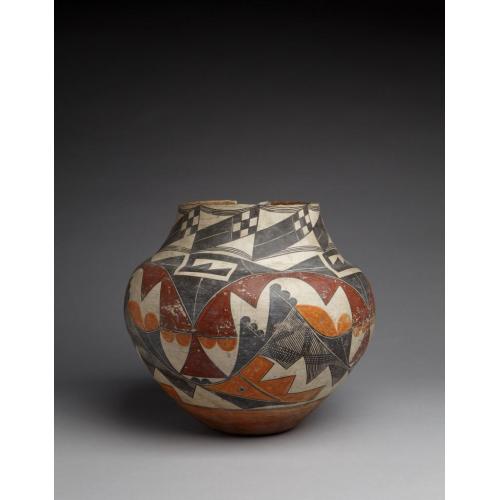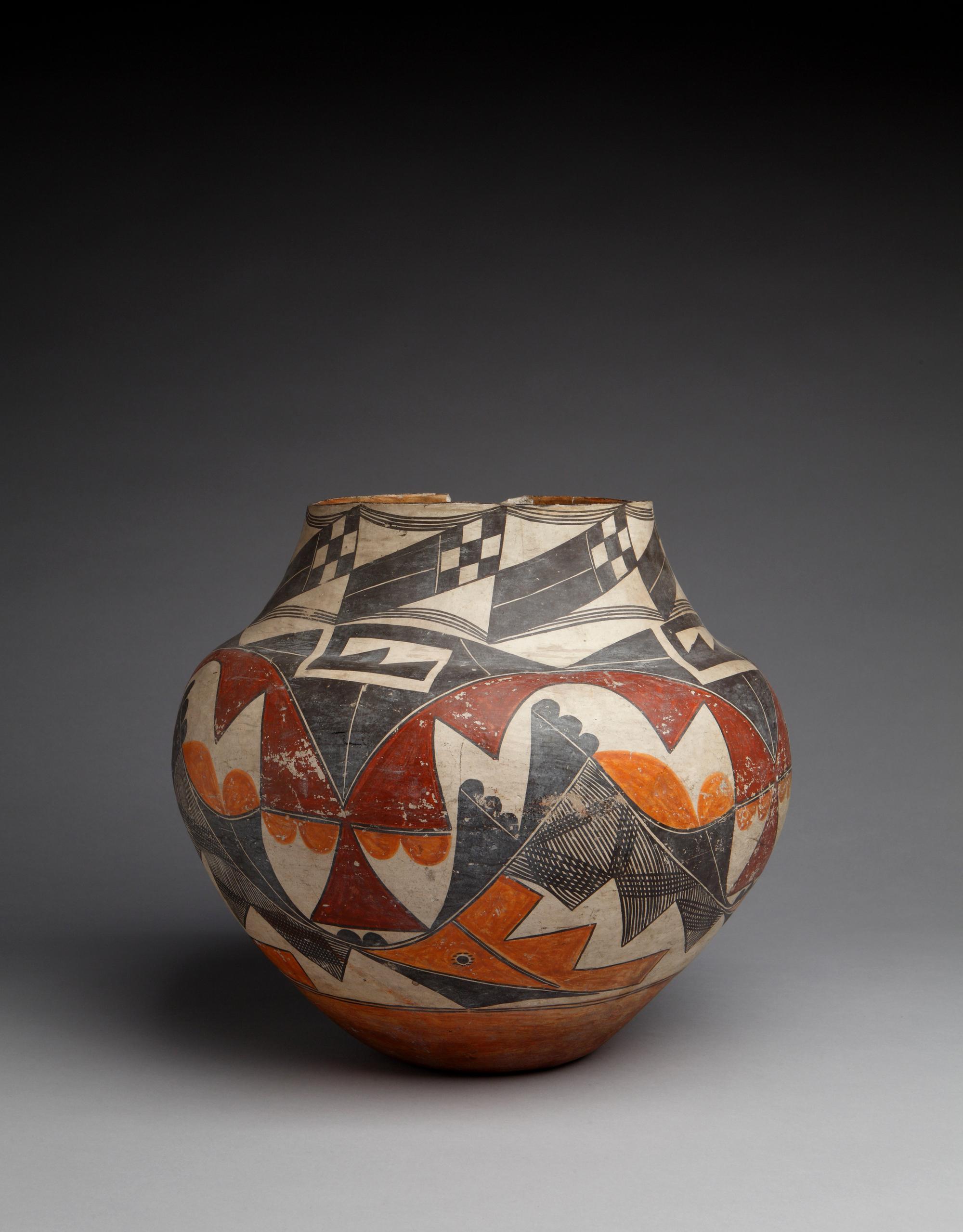
Photograph by Addison Doty. Copyright 2014 School for Advanced Research.
Water jar
Date: 1880-1900
Artist or Maker: Unknown
Dimensions:
Dimensions: 29.2 × 33 cm (11 1/2 × 13 in.)
Weight: 2.3 kg (5.15 lb.)
Medium: clay | paints
Credit Line: Gift of Mrs. Alice A. Atkinson, 1923.
Place Made:
Valencia, Cibola, Bernalillo, and Sandoval Counties, New Mexico, Southwest, United States, North America
Object Number: IAF.218
Not on view
Tribal Collection Review RemarksAccording to the participants in the Acoma collection review visit April 22-24, 2015 (Events Record “Collection Review: Acoma Pueblo, Review 1”): This is a four-color polychrome jar that was used for water. The interior is stained from carrying water. There are four design panels that repeat around the jar with bird elements with eyes (orange), rain lines, in the body and checkerboard eyes with pathway motifs around the neck. The rain lines on this pot cross over in no particular pattern. There is a fire cloud on this pot which has caused the bright orange paint in it to turn a greenish shade. The checkerboard pattern on the neck, the double triangles on the shoulder and the dots around the eyes in the bird motif are indicative of Acoma designs and therefore the participants feel this is an Acoma jar.
There is a double mark near the rim that sparked a conversation as to whether or not that was an early form of a signature or as a way for the artist to know they made this pot. Other early signatures could include marks on the interior, something in the design that is slightly different form the rest of the pattern, marks on the exterior, etc.
According to the participants in the Acoma collection review visit February 26-27, 2019 (Events Record “Collection Review: Acoma Pueblo Review 12”): The shape of a water jar is characterized by usually having a concave base (can also have a flat base) leading to a wider body and shoulder area. The shoulder, which is typically rounded but can also be sharp, leads inward and up to the neck and opening of the water jar. Historic water jars will sometimes have an indentation from the base the pot was built on (also known as a puki).
Water jars of all sizes are made and used. Medium to small size water jars are more commonly used to carry water as the weight of a filled water jar can become quite heavy. Large sized water jars would be used for storing water. Today at Acoma, water jars are still being used and made in both traditional natural and commercial materials.
In Collection(s)
Bibliography:
The Indian Arts Research Center, in collaboration with Native American community scholars, strives to present accurate collections records. Records may be updated as new information becomes available and is reviewed with the Native American community having cultural affinity to particular items. Please write to iarc@sarsf.org if you have questions or concerns related to the documentation.
